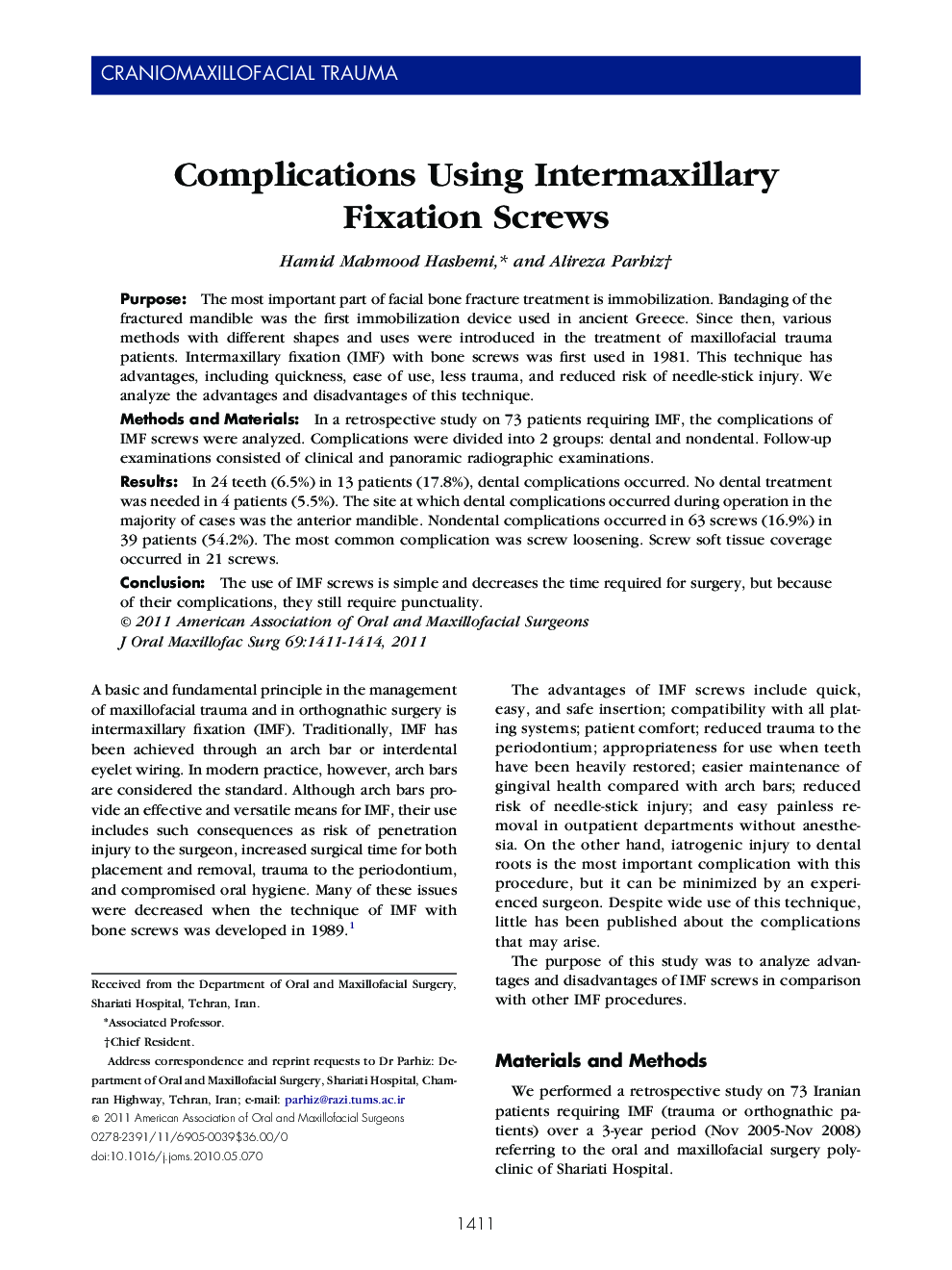| Article ID | Journal | Published Year | Pages | File Type |
|---|---|---|---|---|
| 3154659 | Journal of Oral and Maxillofacial Surgery | 2011 | 4 Pages |
PurposeThe most important part of facial bone fracture treatment is immobilization. Bandaging of the fractured mandible was the first immobilization device used in ancient Greece. Since then, various methods with different shapes and uses were introduced in the treatment of maxillofacial trauma patients. Intermaxillary fixation (IMF) with bone screws was first used in 1981. This technique has advantages, including quickness, ease of use, less trauma, and reduced risk of needle-stick injury. We analyze the advantages and disadvantages of this technique.Methods and MaterialsIn a retrospective study on 73 patients requiring IMF, the complications of IMF screws were analyzed. Complications were divided into 2 groups: dental and nondental. Follow-up examinations consisted of clinical and panoramic radiographic examinations.ResultsIn 24 teeth (6.5%) in 13 patients (17.8%), dental complications occurred. No dental treatment was needed in 4 patients (5.5%). The site at which dental complications occurred during operation in the majority of cases was the anterior mandible. Nondental complications occurred in 63 screws (16.9%) in 39 patients (54.2%). The most common complication was screw loosening. Screw soft tissue coverage occurred in 21 screws.ConclusionThe use of IMF screws is simple and decreases the time required for surgery, but because of their complications, they still require punctuality.
